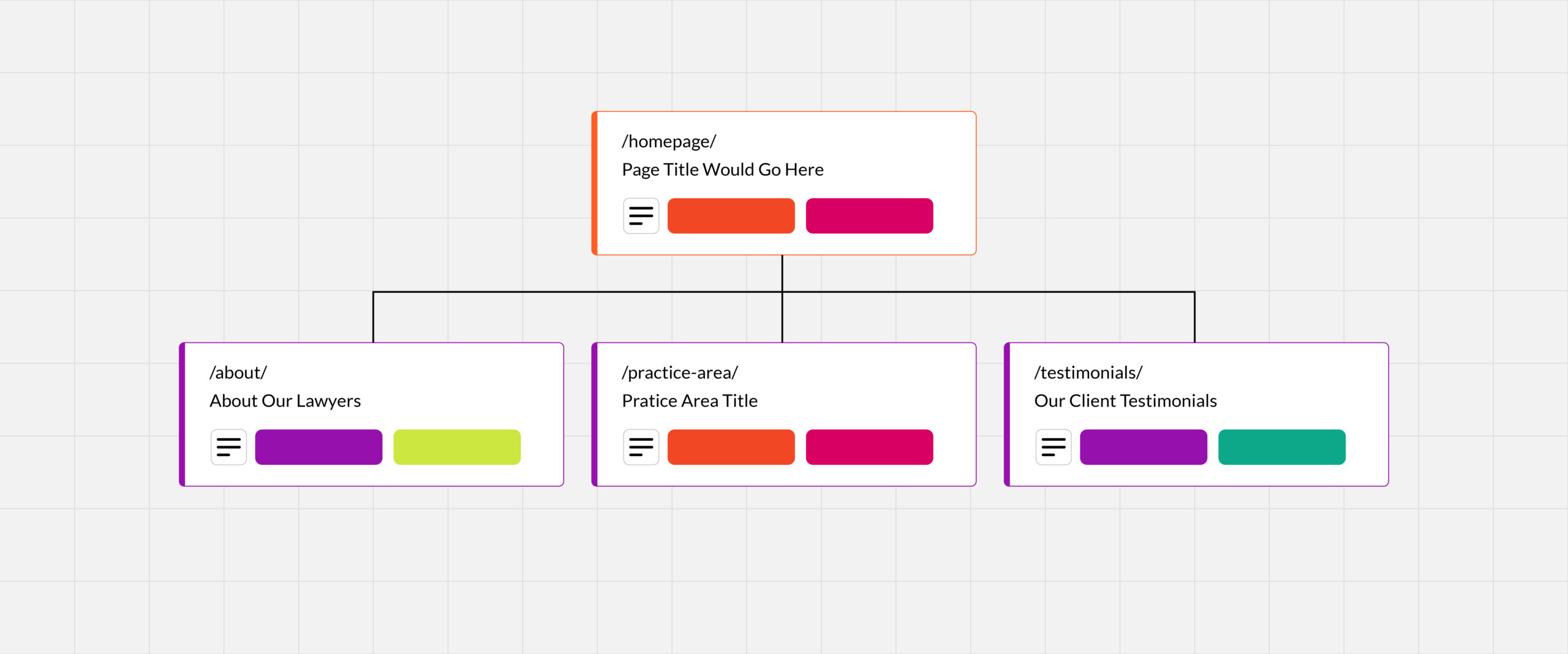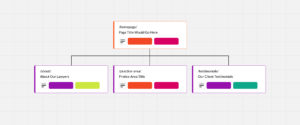User Experience, Web Design

When you walk into a department store, you know what to expect: rows of products arranged by section, punctuated by helpful signage directing you to the products you need. The same idea applies to building a website and Search Engine Optimization. This layout of information and page structures in the digital space is known as website architecture.
Here’s the bottom line: poor site architecture costs your firm website users, search engine rankings, and leads. If your hierarchy is disorganized, it’s difficult for users to navigate and for search engines to understand your site’s purpose.
Creating a website architecture plan with users in mind is one of the first steps to achieving better organic rankings and more engaged visitors. But building a site is a big undertaking, especially if you have lots of content to share. Thankfully, there are resources to support web architecture planning in ways you can see.
Visualizing Website Architecture
Picture website architecture as organizing a filing cabinet. All your content should be grouped by topic and neatly stored with as little clutter as possible. You might have folder organizers with many pages within, but the layout should be logical and accessible. Ideally, anyone could open the filing cabinet and easily find what they’re looking for. The same goes for planning website architecture. Many online tools can help you visualize your site architecture (Postali uses Miro, for example).
Here are five reasons why you should keep web architecture top of mind when planning a site:
1. Improved User Experience
Having an excellent user interface is just as important as SEO. By building your site in a way that clearly directs users where to go and makes it easy for them to navigate, you’re saving them and your organization valuable time and effort — an SEO strategy should extend naturally from the design. A deliberate, thoughtful site architecture ensures that every page is built with purpose and direction, all configured to guide the user.
2. Website Organization & Scalability
Your site’s architecture informs its overall organization — the intent of each page, page titles and headings, content topics, and more.
A critical aspect of website architecture is that it allows you to develop long-term plans. You won’t be writing and publishing all the content on your site at once, so it’s essential to leave room to scale up and add more content later. In-depth organization at the outset will also save you time in the future — you don’t want to spend time tracking down links and picking redirect targets for old pages.

3. Increasing Expertise, Authority, and Trust (EAT)
So, you have an excellent plan for website architecture, but you may wonder whether it helps search rankings. The answer is yes, and it has a lot to do with increasing your site’s expertise, authority, and trust (EAT).
Search engines evaluate EAT when assessing a page’s quality and considering rankings in results pages. This will come much more naturally if your site is structured to benefit the user journey. In short, you can generate topical authority by having a sound site structure in place.
When pages are isolated without any incoming or outgoing links, they exist as islands and won’t generate much traffic. But by using a file cabinet approach to website architecture, EAT will improve as both search engines and users can better identify the trustworthiness of your site.
4. Passing Link Authority
Another advantage of having proper site architecture is passing link authority. It’s hard to entice websites to link to broad or transactional content — not only do they have several of your competitors to choose from, but they usually don’t have much of a need to cite generic pages.
For example, there isn’t as much incentive to link to a page on “divorce law” as there is to link to a page on “divorce law statistics” with more targeted demographic percentages of divorce cases in a particular area.
A common mistake in website architecture is relying too heavily on a header and footer as internal links for an entire site structure. While these are useful primarily for navigation, they don’t have the same bearing on passing link authority as internal links, CTAs, and other tactics to guide both users and search engines through the folders in the virtual filing cabinet of your site.
5. Stand Out
With all these tips in practice in your website architecture, you’ll stand out from your competition. Both users and search engines will recognize your efforts when you take the time to consider all aspects of architecture during the planning stage of a site.
Imagine taking the time to go all out creating a great piece of content only to see it get no traffic because users and search engines couldn’t find it. With proper site architecture, you minimize this risk. Your site is your opportunity to showcase your knowledge, experience, and results online. A strong web structure will help you tell your law firm’s story.
Ready to Talk Website Architecture? Postali Can Help.
What should website architecture look like for your firm? Start the conversation with Postali.
We offer legal marketing solutions to create an effective web strategy and give you a competitive edge. Let us take your firm to the next level by contacting Postali today.
Interested in learning more about website architecture and why we urge our clients to focus on it? We dive deeper into the subject in a recent post on Lawyerist’s website.




